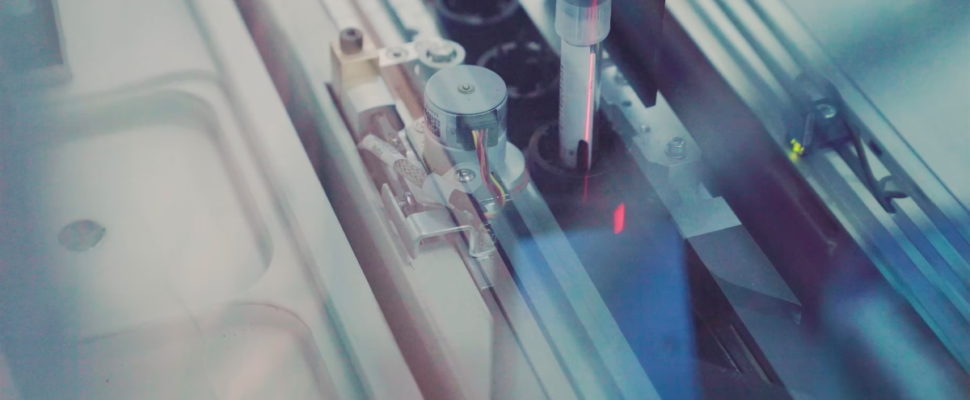The DKK 56bn (EUR 7.5bn) Danish medtech industry employs 15,200 workers, accounts for 7.4 percent of Danish business and industry’s total research investments, contributes to 1.4 percent of national GDP, and exports DKK 18.2bn (EUR 2.4bn) worth of products annually. Here are five key trends affecting this important sector.
Remote Patient Monitoring
For Tisha Boatman, managing director for Siemens Healthineers Denmark & Nordic and Baltics Zone, Denmark and the Nordics stand out for their embrace of digital solutions, as seen in the fact that the company’s global remote patient monitoring solution was born in the Nordics.

[Remote patient monitoring] has become even more important in the wake of the pandemic
Tisha Boatman, Siemens Healthineers
“We have a strong focus on digital, which includes everything from vendor-neutral enterprise digital solutions for all imaging modalities – such as all the patient image management for Helsinki University Hospital – to remote patient monitoring,” she outlines. “Remote patient monitoring is a relatively new business although something we had already been active in pre-COVID in the Nordic countries. It has become even more important in the wake of the pandemic, and we have won some substantial deals in the last couple of years.”
Boatman continues, “Interestingly, in the remote patient monitoring part of our digital business in the Nordics we use a Siemens Healthineers eHealth backend, but the frontend is done in partnership with the Danish firm Open Telehealth. We have won some nice business in this area, including one of the largest health regions in the Nordics which we will begin implementing in the new year.”
Robotic Surgery
Denmark is also at the forefront of other cutting-edge trends, such as robotic surgery. “Many of the most significant trends in healthcare today begin in the Nordics due to these countries’ ability to invest in new technology,” exclaims Lars Georg Rust, regional managing director north at Japanese firm Olympus, the global market leader in flexible endoscopes. “Robotic surgery is a good example; I believe there are over 28 surgical robots operating in Denmark today,” he adds.

Many of the most significant trends in healthcare today begin in the Nordics
Lars Georg Rust, Olympus
“Danish hospital customers insist on a high use of robotics, particularly in the lab,” chimes in Siemens Healthineers’ Boatman. “They want touchless laboratories, which are very good for patients, because they increase quality and reduce the need for staff to do manual tasks. There is a high reliance on automation, particularly in the lab, and a tendency towards high-quality equipment.”
A Global Outlook
Denmark also boasts several notable homegrown medtech success stories such as ostomy, continence, urology, and wound care company Coloplast and hearing aid specialists GN Hearing and William Demant Holding, all of which now have well-established international footprints.

One of Denmark’s strengths from a cultural perspective is that, as a small nation, it has always been necessary to stimulate the economy through international trade and interactions with other countries
Gitee Aabo, GN Hearing
GN Hearing CEO Gitte Aabo expands, “One of Denmark’s strengths from a cultural perspective is that, as a small nation, it has always been necessary to stimulate the economy through international trade and interactions with other countries. This is ingrained in the country’s systems with functions such as education tuned towards Denmark’s strengths in healthcare. More than 50 percent of the global market for hearing aids is supplied by Danish companies, which owes to our expertise in hearing aids and healthcare more generally.”
Public-Private Partnerships
The spirit of collaboration that suffuses the Danish life sciences industry at large is especially prevalent in medtech, according to Lars Georg Rust of Olympus. “The countries in this cluster are ahead of the curve in terms of public-private innovation projects,” he proclaims. “The digitalisation of the healthcare systems will open up for new technologies and new ‘players’ in the market. Public-private innovation partnerships will be important in the pursuit of new technological solutions that can help to ensure an efficient healthcare system in the future, where demography will continue to be a significant challenge.”
A Move to Value-Based Pricing
While innovation tends to be well embraced by Danish payers and procurement bodies, industry voices still assert that more can be done to truly embrace value-based healthcare and pricing.
“Our definition of value extends to the education of healthcare personnel, the impact of the new device on existing treatments, and the ability to innovate on treatments through the application of the new technology,” posits Peter Huntley of Medicoindustrien, the industry association for Danish medtech. “This total health economics perspective drives Medicoindustrien and is the basis for introducing new technology and new healthcare propositions, saving public healthcare resources, and driving the sourcing of new technologies… If public purchasing of medical devices is only determined by price, cheaper and inferior products will dominate the market and price will drive down the efficiency of the product. Therefore, it is important to determine the key healthcare performance indicators associated with the tenders.”
Siemen Healthineers’ Boatman asserts that there is still a long way to travel on this journey. “As much as the Danish authorities talks about the concept of value-based procurement, volume remains king in the country’s tendering processes,” she laments. “Long-term concepts like staff training and education, greenfield investment, or even renewal cycles are absent from Danish tenders.”
Rust adds that he foresees new financial emerging in the future to better support value-based healthcare. “These could include ‘pay per procedure’, where the focus is more on the cost of the procedure and the benefit for the patient instead of the cost of the individual product/solution,” he states.


